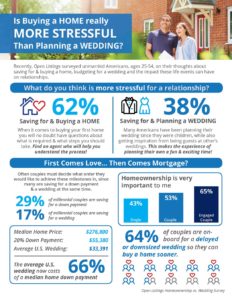Some Highlights:
- According to a new survey from Open Listings, 62% of Americans ages 25-54 believe that buying a home is more stressful than planning a wedding.
- Many young couples are saving for a wedding and a home at the same time.
- The average US wedding now costs 66% of a median home down payment, according to The Knot.
Continue Reading →
SEP
2018










